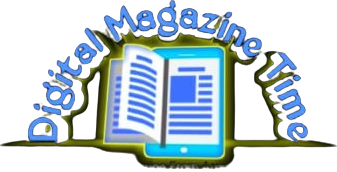Asseturi: Understanding Its Impact and Importance
Introduction
In today’s digital-driven world, assets are no longer limited to physical property or financial resources. A new wave of digital assets is emerging, and it’s crucial to understand what they are and why they matter. One of the key terms floating around in this space is “Asseturi.” But what exactly is Asseturi, and how does it influence businesses and individuals?
This article dives into the concept of Asseturi, its various types, and its significance in shaping the way we manage both physical and digital assets. Whether you’re a business owner, a professional, or simply someone curious about the evolving landscape, this comprehensive guide will offer insights into Asseturi and its role in asset management.
What is Asseturi?
Asseturi refers to the organized approach and system of managing different types of assets, particularly in a digital framework. It involves creating, maintaining, and utilizing assets to maximize their value. The assets can range from traditional forms like property and machinery to more contemporary ones such as digital content, software, or intellectual property.
While the term “Asseturi” may seem new, the concept behind it has been around for decades. What makes it stand out is its ability to integrate both physical and digital assets into a unified system, making the process of managing them more streamlined and efficient.
Types of Assets Managed by Asseturi
To fully grasp the importance of Asseturi, it’s essential to understand the types of assets it deals with. Assets can be broadly categorized into two types: tangible and intangible. Both play a crucial role in business operations and personal wealth management.
1. Tangible Assets
Tangible assets are physical resources that businesses and individuals own. These include:
- Property: Buildings, land, and real estate.
- Equipment and Machinery: Tools, vehicles, and other operational machinery.
- Inventory: Raw materials and finished goods.
- Physical Documents: Contracts, records, and other hard-copy materials.
Properly managing these assets is key to ensuring that they are used effectively and maintain their value over time. Asseturi provides systems and tools to track the lifecycle of these physical assets, from acquisition to retirement.
2. Intangible Assets
Intangible assets have no physical form but are equally important. Examples include:
- Digital Content: Media, software, and online products.
- Intellectual Property: Patents, copyrights, trademarks.
- Brand Value: The reputation and goodwill associated with a company or individual.
- Data: Customer data, analytics, and proprietary information.
With the increasing digitization of the world, intangible assets are becoming a focal point in asset management. Asseturi’s role in managing these intangible resources ensures that they are leveraged to generate maximum value.
How Does Asseturi Work?
At its core, Asseturi relies on technology to create a framework for tracking, evaluating, and maintaining assets. Here’s a simplified view of how the process works:
- Identification and Documentation: The first step in asset management is identifying the assets a business or individual owns. This involves creating a detailed inventory of physical and digital assets.
- Valuation: Once assets are identified, they need to be valued appropriately. For tangible assets like equipment, this involves determining market value and depreciation. For digital assets like intellectual property, the valuation might involve considering future earning potential.
- Maintenance: Assets require periodic maintenance, whether it’s a piece of machinery that needs servicing or a piece of software that requires updates. Asseturi provides tools to schedule and manage this maintenance efficiently.
- Risk Management: Every asset comes with certain risks. For physical assets, this might include theft or damage. For digital assets, it could involve data breaches or loss of intellectual property. Asseturi helps mitigate these risks by providing tracking systems, security measures, and regular monitoring.
- Disposal or Renewal: Eventually, assets will either be disposed of, sold, or replaced. Asseturi assists in managing this final stage, ensuring compliance with legal standards and helping to make informed decisions on asset renewal or disposal.
Benefits of Using Asseturi
Now that we understand how Asseturi works, let’s explore the benefits of using this system for asset management.
1. Improved Efficiency
Asseturi allows for centralized management of all types of assets. Whether you’re handling physical machinery or digital content, you can monitor, track, and maintain everything in one place. This reduces duplication of efforts and ensures nothing falls through the cracks.
2. Cost Savings
Proper asset management can result in significant cost savings. By keeping track of asset maintenance schedules, Asseturi reduces the likelihood of unexpected breakdowns and repairs. Moreover, understanding the value of your assets allows for better decision-making, avoiding unnecessary expenses.
3. Enhanced Security
For both physical and digital assets, security is paramount. Asseturi systems come equipped with advanced security features such as encryption, secure logins, and real-time monitoring, reducing the risk of theft, data breaches, and other security threats.
4. Strategic Planning
By having a comprehensive view of your assets and their value, Asseturi enables better strategic planning. Businesses can allocate resources more effectively, plan for future investments, and ensure that their assets are being used optimally.
Challenges in Asset Management
Like any system, Asseturi is not without its challenges. Understanding these can help users adopt it more effectively and mitigate potential risks.
1. Complexity of Digital Assets
As more businesses move into the digital space, managing intangible assets like data and intellectual property becomes more complex. Ensuring that these assets are properly tracked, valued, and protected requires constant attention.
2. Costs of Implementation
Implementing an Asseturi system can be costly upfront. Businesses must invest in the technology, training, and infrastructure needed to effectively manage their assets. However, the long-term benefits often outweigh the initial investment.
3. Keeping Up with Changes
Asset management is not a static process. Assets depreciate, new ones are acquired, and regulations may change. Ensuring that Asseturi systems are up-to-date and compliant requires ongoing effort.
Best Practices for Using Asseturi
To get the most out of Asseturi, here are some best practices you can follow:
1. Regular Audits
Conduct regular audits of your assets to ensure they are accurately accounted for and properly maintained. Audits help identify discrepancies, unnecessary costs, and areas for improvement.
2. Training and Education
Asseturi systems can be complex, especially for businesses managing a large number of assets. Proper training for employees and stakeholders is key to ensuring smooth operation and maximizing the system’s benefits.
3. Stay Updated with Technology
Asset management systems like Asseturi are constantly evolving. Staying updated with the latest technology and tools will ensure that you’re getting the most out of the system. This includes regularly updating software, using the latest security protocols, and integrating new features as they become available.
The Future of Asset Management
As the world continues to digitize, asset management will become even more important. Asseturi will likely expand its focus to include a wider range of digital assets, from cryptocurrencies to AI-driven intellectual property. Businesses and individuals who adopt these systems early will be better positioned to thrive in a rapidly changing landscape.
However, the key to success in the future of asset management lies in balance. By carefully managing both tangible and intangible assets, using the right tools, and staying proactive about changes, businesses can ensure that they are prepared for whatever comes next.
Conclusion
Asseturi is a powerful tool for managing assets in an increasingly digital world. By offering systems for tracking, evaluating, and maintaining both physical and digital resources, it helps businesses and individuals alike make smarter decisions, save money, and enhance security.
As you consider implementing Asseturi, remember that asset management is an ongoing process. Regular audits, staying up-to-date with technology, and ensuring proper security measures will help you get the most out of your assets and prepare for the future.
Incorporating Asseturi into your asset management strategy can bring immense benefits, both immediate and long-term. With proper implementation and maintenance, you’ll be on the path to success, knowing that your assets are being managed efficiently and securely.
Visit the rest of the site Digital Magazine Time for more interesting and useful articles. Thank you!

